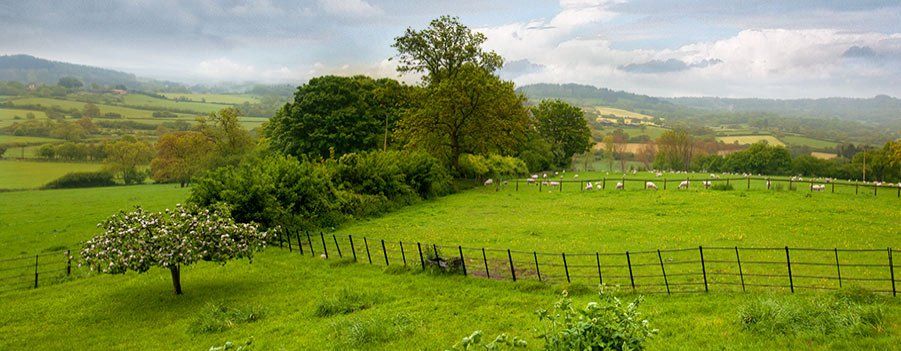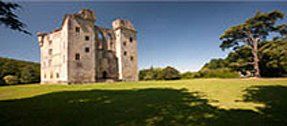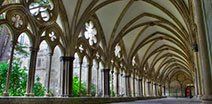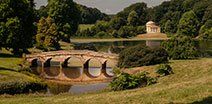The Location

Tisbury & The Nadder Valley, a Spectacular Location for a Rustic Country Wedding
Tisbury is the largest village in the Nadder Valley: it is really a small town. Set in exceptional beautiful scenery, it lies between the A303 & A30, but it is quite remote from all main roads, and has a railway station. The history of Tisbury can be traced back to the Neolithic period, the Romans controlled the district from 43 A.D. & the West Saxons(mid 8thc) named the settlement Tissebiri Tysses Burh. A powerful monastery was established by 700, where the Synod of the Nadder assembled in 705, attended by a Devonian monk called Winfrid, who became a missionary on the continent, regulator of the church in the Frankish Empire and can be regarded as one of the first unifiers of Europe; significantly, St. Boniface became patron saint of Germany.
My father –in-law, Sir Anthony Rumbold, a scholarly sensitive man, the previous incumbent of Hatch House, said in a moment of inspiration, that Tisbury was ‘the centre of the universe’!
My father –in-law, Sir Anthony Rumbold, a scholarly sensitive man, the previous incumbent of Hatch House, said in a moment of inspiration, that Tisbury was ‘the centre of the universe’!

Old Wardour Castle
Great local families, who rose to power under the Tudors, as soldiers, politicians, courtiers, are the Arundells of Wardour Castle (a recusant Roman Catholic family who played their cards artfully during the protestant vs. Roman Catholic conflicts of the Tudor period) and the Pembrokes (Herberts) of Wilton. Wardour Castle (c. 1392), the only British castle ever built in the hexagonal form that was stylish in France, is visible from Hatch House: due to Civil War hostilities it is now a picturesque but roofless ruin, and a marvellous place to give young children a run.
Nearby is Wilton (about 10 miles by road), a magnificent palatial country house: it survived the Civil War in tact, and is stuffed with rich furnishings, great art, many objects of historical interest; it is still lived in by the Pembrokes, but open to the public.
Nearby is Wilton (about 10 miles by road), a magnificent palatial country house: it survived the Civil War in tact, and is stuffed with rich furnishings, great art, many objects of historical interest; it is still lived in by the Pembrokes, but open to the public.

Medieval Tithe Barn, Tisbury
The Pembrokes and the Arundells acquired much property as a result of the Tudor Dissolution of the Monastaries under Henry VIII. The Benetts of Pythouse and Norton Bavant (from whom my husband's family are descended) rose to prominence before the 16th century. Like many minor gentry, they were lawyers, knights and wool merchants. The Bennets lived in Pythouse acquired Hatch as a dower house in the mid-19th century. Very likely the Benetts were tenants of the Benedictine Abbess of Shaftesbury (the Abbey was established by King Alfred in 888, and was the richest nunnery in England); they derived the name Benett (blessed?) from Benedictine. Like the Arundells and the Pembrokes, the Pythouse Benetts fought for the Royalist side in the Civil War.
Great local families, who rose to power under the Tudors, as soldiers, politicians, courtiers, are the Arundells of Wardour Castle (a recusant Roman Catholic family who played their cards artfully during the protestant vs. Roman Catholic conflicts of the Tudor period) and the Pembrokes (Herberts) of Wilton. Wardour Castle (c. 1392), the only British castle ever built in the hexagonal form that was stylish in France, is visible from Hatch House: due to Civil War hostilities it is now a picturesque but roofless ruin, and a marvellous place to give young children a run. Nearby is Wilton (about 10 miles by road), a magnificent palatial country house: it survived the Civil War in tact, and is stuffed with rich furnishings, great art, many objects of historical interest; it is still lived in by the Pembrokes, but open to the public.
Great local families, who rose to power under the Tudors, as soldiers, politicians, courtiers, are the Arundells of Wardour Castle (a recusant Roman Catholic family who played their cards artfully during the protestant vs. Roman Catholic conflicts of the Tudor period) and the Pembrokes (Herberts) of Wilton. Wardour Castle (c. 1392), the only British castle ever built in the hexagonal form that was stylish in France, is visible from Hatch House: due to Civil War hostilities it is now a picturesque but roofless ruin, and a marvellous place to give young children a run. Nearby is Wilton (about 10 miles by road), a magnificent palatial country house: it survived the Civil War in tact, and is stuffed with rich furnishings, great art, many objects of historical interest; it is still lived in by the Pembrokes, but open to the public.

Salisbury.
Click for more information
Click for more information

Stonehenge.
Click for more information
Click for more information

Kingston Lacy.
Click for more information
Click for more information

Stourhead.
Click for more information
Click for more information


